
What is your favorite bird species?
More than a specific bird, it is a group of birds that really fascinates me, possibly because in my opinion they are the greatest exponent of the ability of birds to fly, the swifts. Beings that can live constantly flying. But if I have to choose one, the Alpine Swift with its enormous size is spectacular.
What is your name, and where do you live?
My name is Javier Morala and I live in the north of Burgos, also in the north of Spain.
What are the main regions or locations you cover as a bird guide?
I guide in a small area in the north of Spain, a rural area, quite well preserved. In the north of Burgos, in the region of Las Merindades where the great northern plateau of the Iberian Peninsula begins, an area with a combination of moors, valleys, forests, and wetlands that can introduce you to the enormous bird biodiversity of Spain.
Egyptian Vulture
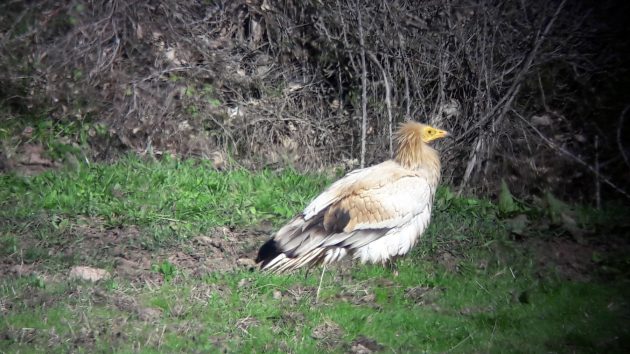
How long have you been a bird guide? How did you get into bird guiding?
Since I was a child I was interested in birds, so when my wife and I decided to live in the countryside, I already knew that bird watching could be a good opportunity for life. In 1998 we opened the Posada Molino del Canto from where we offer bird-watching routes. So we have been running our B&B&B for almost 30 years: Bed & Breakfast & Birds!!!
What are the aspects of being a bird guide that you like best?
When you are with beginner birdwatchers, helping them discover this wonderful world of birds is something very special and of course, when you receive experienced birdwatchers, sharing the hobby and showing them some of the birds in our environment is also very pleasant.
Short-toed Snake Eagle
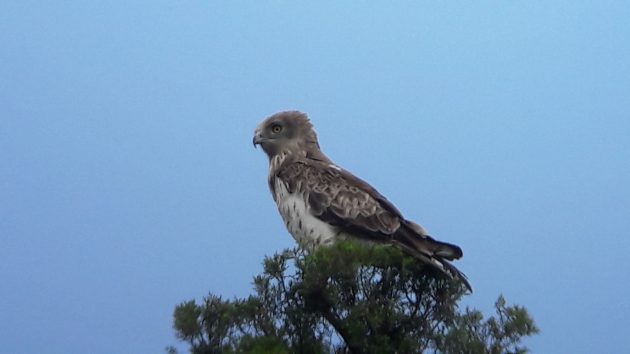
What aspects do you dislike the most?
The enormous conservation effort that must be made in defense of birds.
There is a great transformation of the rural environment and the disappearance of valuable habitats. The energy problems in Europe and Spain in particular are directly affecting the natural environment. The supposed commitment of governments to “green” energy is leading to much of Spain’s rural and natural environment being converted into industrial zones, with enormous environmental loss and a direct impact on birds.
The other major problem is the indiscriminate use of agricultural pesticides, with such a large impact on birds that groups of birds and other species can be observed disappearing from one year to the next.
In Europe there is supposed protection for many species, but only on paper. The reality is very different and throughout Europe, there is a constant decline in bird populations.
If we talk about the work as a guide itself, in all these years, I have never, ever met any unpleasant birder. It is always a good experience to meet other people and show them some of the birds in my area.
What are the top 5-10 birds in your region that you think are the most interesting for visiting birders?
It often depends on the origin of the birdwatcher, but the presence of several species of birds of prey in the area is one of the attractions: Griffon and Egyptian Vulture, Golden Eagle, Short-toed Eagle, Booted Eagle, Red and Black Kites, European Honey Buzzard, and recently, White-tailed Eagle. Other very interesting species are the woodpeckers: Great Spotted Woodpecker, Middle Spotted Woodpecker, Wryneck, Iberian Green, and Black Woodpecker.
Griffon Vulture
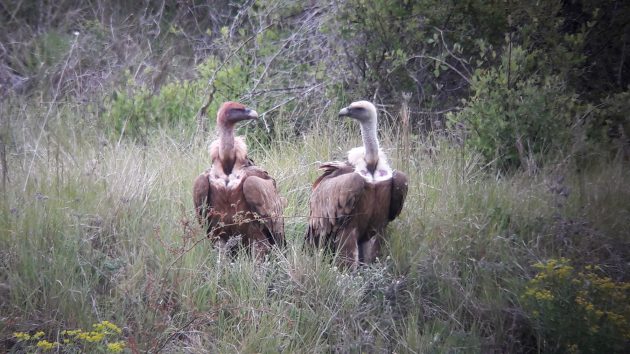
Small birds are also well represented with Iberian Chiffchaff, Crested Tit, Shrikes, Larks …
Red-backed Shrike
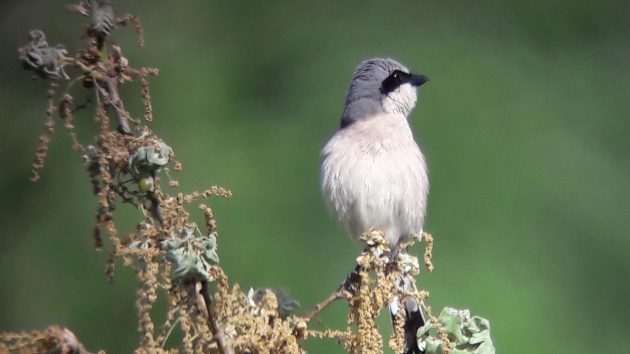
Can you outline at least one typical birdwatching trip in your area? Please briefly describe the locations, the key birds, and the approximate duration of such a trip
As we also offer accommodation, all our routes start from Posada Molino del Canto, where, after a good breakfast, we begin the day of birdwatching. And due to the climate we have in this area, even in the hottest months, it is not particularly necessary to stop or finish mid-morning, in fact at that time, we continue birdwatching and observing the movements of birds of prey that love thermal currents so much.
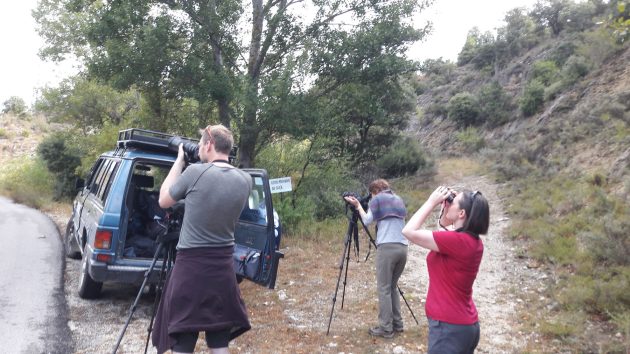
We offer three types of bird-watching routes. Walking through the valley can report almost 50 species in one day in a good season, and no less than 30 in other seasons. On this type of route, the observation of small birds is the most striking, since with some skill you can observe several species of warblers, chiffchaffs, tits, finches, and woodpeckers. And always with your eyes set on the sky where it is easy to see vultures and eagles. This route always has the Ebro River in mind with kingfishers and dippers as the most representative birds.
Half-day or full-day routes that vary from +-4h to +-7h, these routes are by vehicle visiting different habitats and of course recording different species, in good season it is not difficult to record between 60-70 species. Combining 3-4 days of observation, reaching 100 species can be feasible.
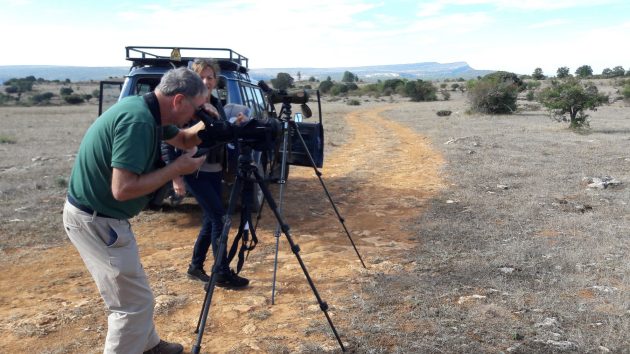
Fortunately, the area brings together in just a few km. a good variety of habitats, river canyons with huge limestone walls (with a variety of birds of prey and vultures), valleys with a variety of agricultural and shrub mosaics (with Finches, Buntings, Thrushes…), forests with old trees (Treecreepers, Tits, Woodpeckers, Warblers…), high moors with little vegetation (Larks, Harriers, Shrikes…), and aquatic areas with a large body of water and others with natural lagoons (Herons, Waders, Ducks…)
One of the most interesting things about any route is that on all of them, we have a good picnic that allows us to face the afternoon with energy.
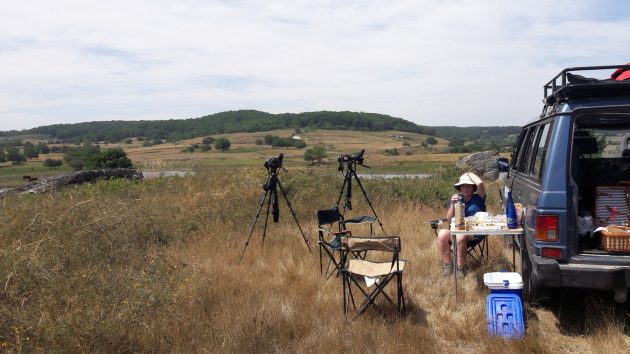
The day ends with a good dinner at the inn and a review of the birds observed. We work with eBird, so each observer receives in their email the list or lists of the birds recorded, as well as the map with the routes that have been taken, within a trip report that can be expanded with more data.
What other suggestions can you give to birders interested in your area?
The best times are spring, from April to July, as this is the time when the birds that winter in Africa arrive to join the residents. Birding in winter depends on weather conditions, but the winter months give us large flocks of waterfowl, finches, and waders. Autumn is also a good time to witness migration and see the first wintering birds.
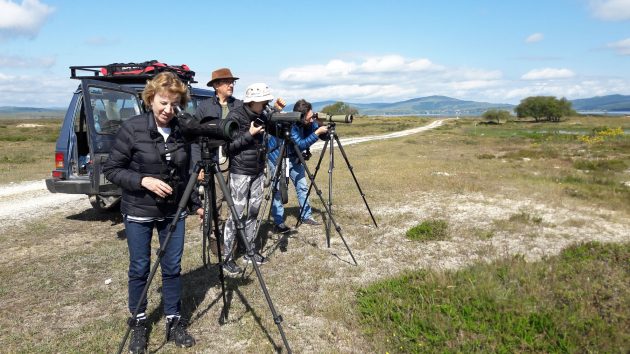
If any reader of 10,000 Birds is interested in birding with you, how can they best contact you?
Very simple:
- Through our website https://molinodelcanto.com/
- email info@molinodelcanto.com
- Phone or Whatsapp at +34689891747













I love this guide series!
It’s worth mentioning that Javier is also a very good cook. I speak from experience (and the Molino is a great place to stay). He lives and guides in a beautiful and uncrowded part of Spain.
Hello Javier! I was lucky enough to stay with you and your lovely wife a few years back, and go on one of your birding tours. It’s a memory I cherish. Thank you for doing what you do!